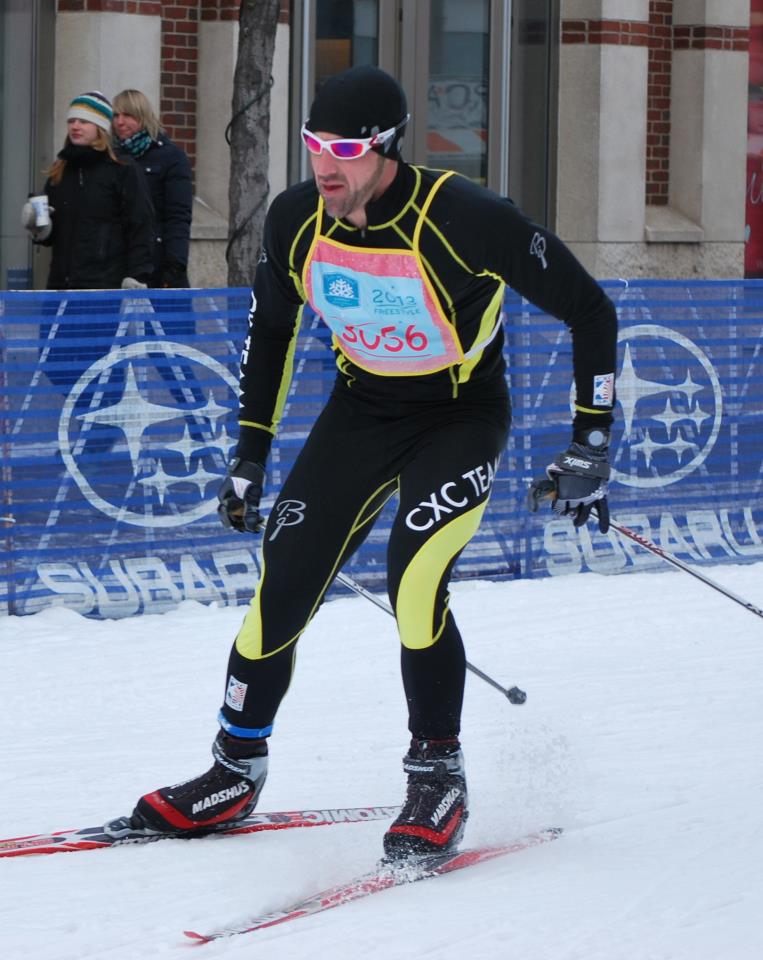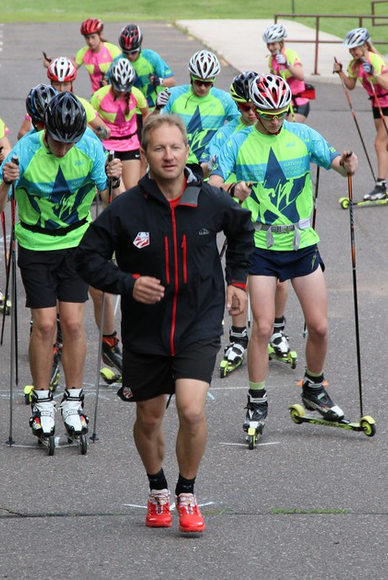An Interview with Vince Rosetta.
Vince always loved to bike, as it was his “ticket to travel” during the summer as a little kid to take him to the trails with friends, where they spent endless hours biking. Today, Vince continues to bike, as a way to maintain his endurance seeing as he has also added another highly aerobic sport to his regime; cross country skiing.
Vince Rosetta shares his experiences and input on the correlation between biking and skiing and how both are beneficial to building a base of endurance.

Before moving to Minneapolis in 2010, Vince lived in Austin, Texas for ten years.
“Living in Austin and San Antonio during the height of the Tour de France craze, road riding was king. Everybody I hung out with was on road bikes. I worked at three bike shops during my time in Texas and that is all we did. My final stop before moving to Minneapolis was working at Mellow Johnny’s, the shop Lance Armstrong owns, being there at the height of the Lance craze was an incredible experience. Basically, if you weren’t riding a bike you weren’t doing anything. The infrastructure for cycling in Austin was amazing. I’m pretty convinced that there were still trails I was never on and I was down there for 10 years.” Explains Vince.
Despite Austin’s endless bike trails, in his opinion, the Minneapolis bike culture has topped Austin’s. There was another aspect Minneapolis had that Austin didn’t; snow.
Vince has a background in skiing, but being without snow for ten years made for a more challenging comeback.
“I skied a little bit in college, but a few years after graduation I found myself in Texas. Needless to say there wasn’t any skiing to be had for 10 years. I moved to Minneapolis in 2010 and picked up right where I left off. I was just a little more rusty than I had hoped. The most challenging aspect in resuming cross country skiing after so many years off was basically learning how to do it again. I had the general idea how to ski but it was really ugly. Imagine a newborn deer trying to walk, that is how I felt when I was re-learning. The frustration of re-learning alone, was all the motivation I needed to get better at skiing. I think I went to Como golf course in St. Paul everyday for a month just to practice technique, and make progress everyday I was out there. A friend mentioned a group called CXC so I looked more into it and I have been involved ever since. I continue to learn things every time I go to a Masters camp.”

Once Vince got his ski legs back, he realized skiing was the ideal winter workout to keep him in shape for bike season, and bike season was a perfect way to build his base for the ski season.
“Four hours on a bike up and down Minnesota and Wisconsin hills throughout summer and fall, do wonders for my base building. Throwing in high intensity road rides simulate the effort needed to finish the Birkie or any other ski race. Constantly speeding up your heart and then recovering long enough to do it over and over again, lays the groundwork for the ski season.”

Once the snow flies, and the bike gets put away for the winter, skiing intensity workouts are important for Vince to increase physical and mental gains for both the ski and bike season. He mentions he doesn’t have to do long skis, but can focus on short intense workouts to maximize top end speed and recovery.
“In the winter, you can’t replicate the level of intensity skiing gives you in your basement with a bike hooked up to a bike trainer. Biking on a trainer more than 45 minutes is a mind numbing experience. Too many of those types of workouts and you go nuts. Nothing beats being outside with friends flying up and down the Birkie trail.”

Vince has become a better skier in part by being a member of the CXC Masters Team. He attends technique camps and clinics throughout the season. Although the workouts are beneficial, Vince also loves the social aspect and camaraderie of being a Masters Team Member.
“After sessions It’s fun to hear different stories of everyone on the Masters team. The aspect I like most about the Master’s team, is it’s made up of people from all ability levels and backgrounds. I’ve been apart of some training groups where if you are not an Elite or Wave 1 skier in the Birkie, you get the feeling you shouldn’t be there and are treated like a 2nd class citizen. Those groups are all about ego, having the best stuff, fastest times, etc… Thankfully that isn’t anywhere close to the CXC Masters Team! I say team, but it’s more like a group of friends that all help each other to get better as a group. Egos are non existent and yes, Elite wave members actually talk to people who have been on skis for the first time.”
Switching gears to spring, the benefit of skiing for four months is evident for Vince when he gets on the bike for the first ride of the season.
“Basically, my base is already built for the riding season. Honestly, I can say ever since I’ve started skiing, my road riding and racing has never been stronger. In the early months when people are out spinning long base building rides, I’m able to concentrate on higher intensity workouts because my base is solid from skiing.” Explains Vince.

When Vince isn’t riding his bike, skiing or working, he serves as a CXC Board Member as well.
“When Yuriy asked me if I ever considered a board position at CXC I really didn’t know what to say other than “yes.” There were other ski boards I wanted to be apart of but for one reason or another it didn’t work out. An opportunity to help grow skiing and more importantly CXC, was a chance I couldn’t pass up. It is fun seeing all the programs take form from planning to execution. Contributing to the growth of CXC is a very rewarding experience.” Said Vince
As a board member, Vince’s vision is to continue to grow CXC to become the go-to cross country ski organization in the country.
Skiing or biking, we’re sure Vince will continue to promote the CXC vision, and for that we are thankful!

Support CXC Adaptive Program for Kids with physical disabilities and visual impairment with your ticket purchase for the annual bike drawing! Win a custom designed, hand crafted, Eriksen titanium road frame bike! Click here for more details!









